15 Types of Pecans to Create Complex Dishes & Desserts
Author: Jen Worst | Editor: Omar Alonso
Review & Research: Jen Worst & Chris Miller
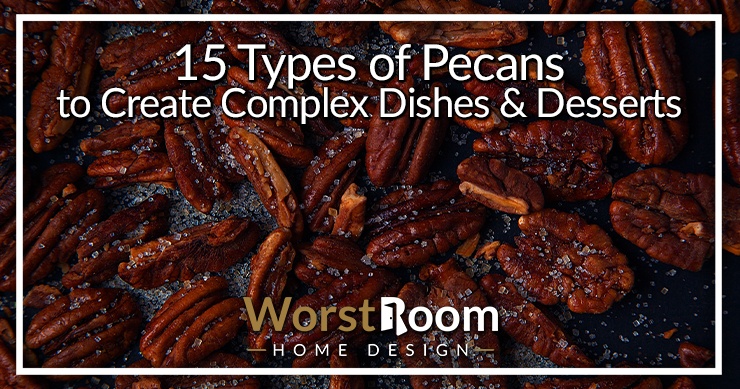
Whether as a part of a healthy diet or the main ingredient of a delicious dessert, all types of pecans are an excellent choice. This nut has been a staple in the daily meals of millions of people for centuries now.
Despite its wild popularity and its constant demand, many do not know about the wide varieties in which it is available. Now, there are various pecan types out there, each with its own properties and growing conditions.
Each variation also has different compatibility in terms of the ways in which you can consume them. You will also be surprised to see the difference in aesthetics and exteriors in which they are available.
15 Types of Pecans
A quick piece of trivia for you: Did you know pecans are among the most recently domesticated crops, only being first commercially grown in the USA in the 1880's?
Below are descriptions of the pecan variations that are available in the current market. Keep on reading to discover their properties, the ways in which you can identify them, and their uses to understand which one will help serve your purpose the best.
There's over 500 pecan species and cultivars out there, but these are the pecan types you can actually get your hands on and enjoy.
Summer Pecans
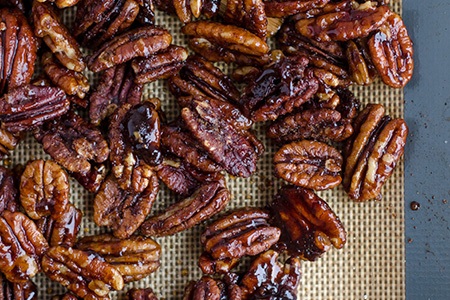
If you're from the state of Georgia in the United States, you've probably been enjoying Summer pecans your whole life. Not only are their trees a breeze to grow and maintain, they'll yield about 48 nuts per pound of pre-cracked nuts.
You'll find the kernels are darker than you get from other varieties of pecans, though you may think that's normal too since these kinds of pecans are so common. They're a great candidate fro growing in your backyard if you live in the USDA Hardiness Zones of 6 through 9.
Amling Pecans
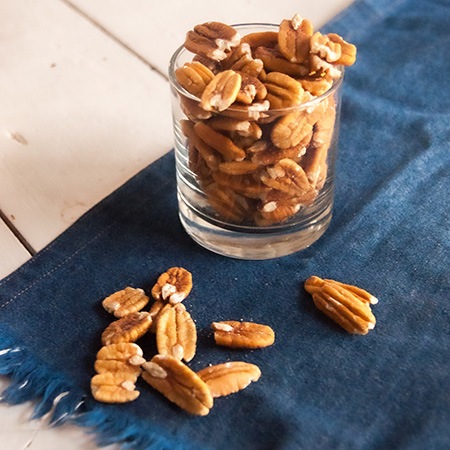
If your intention is to grow your own pecan trees, the Amling pecan tree comes highly recommended. But make sure you have a large yard, because this tree can reach above 100 feet in height.
With ample land, you'll have an amazing shade tree to sit under and collect nuts in September and October. You can look to collect about 62 nuts per pound, and you'll have no lack of nuts to harvest or find on the ground.
Cape Fear Pecans
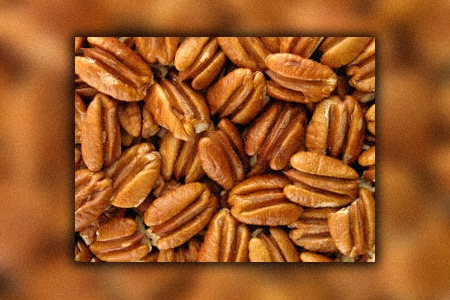
Probably the most popular type of pecan worldwide, the Cape Fear pecans originated in North Carolina. They are fairly thick and are easily distinguishable by their oval shape.
It is a particularly profitable variation to grow because of its compatibility for various purposes and its high demand among consumers.
Not only are Cape Fear pecans profitable for cultivation, but they are also extremely convenient to grow. One of the biggest issues you need to watch out for when growing nuts of any kind is the potential diseases they might develop.
Thankfully, these different types of pecans are extremely resistant to most leaf diseases, making them easier to grow. Another great quality of the Cape Fear pecans is its distinguishable body and its quick cultivation payoff. It has a hard shell with a smooth body and deep brown color.
Cracking it open will reveal the kernel within, which looks extremely appealing with light colors and vibrancy. It has an average weight of 8 grams, making it ideal for both consumption and cooking.
One more unique factor about the Cape Fear pecans is the tree in which it grows. A major problem that most farmers face when growing nuts typically is the hassle of providing extra support to the plants.
You won’t have to go through any of these troubles when growing this variation as they are comparatively stronger with dense taproots.
Caddo Pecans
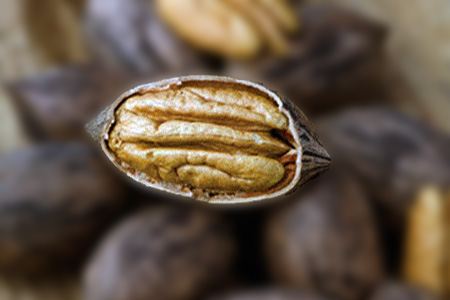
If you want to receive a high yield of pecans from a smaller number of trees, look no further than the Caddo pecan tree, especially if you live in growing zones six through nine. Not only will you earn about 60 nuts per pound but they're easy to crack.
The Caddo tree will begin producing nuts earlier than other types of pecan trees as well and will continue to do so throughout maturity. They're heat and cold tolerant, making them easy to work with pecan varieties.
Hican Pecans
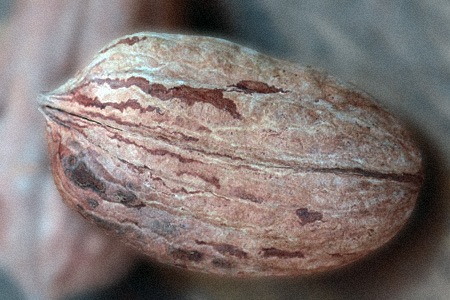
These kinds of pecans are a hybrid between Hickory pecans and Mahan pecans. Compared to other types of pecan trees, these are more cold tolerant and thus easier to manage if you're growing them yourself.
If you've enjoyed northern pecans than you'll notice that the taste profile is similar in this variety of pecan. The Hican pecan tastes more like hickory than pecan and are treasured due to their rarity.
The interesting thing about Hican pecan trees are that they can pollinate with either a pecan tree or a hickory tree. They're a very interesting pecan species, indeed.
Candy Pecans
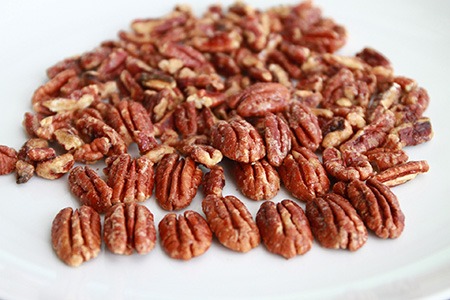
If you're looking to treat yourself to some pecans as a daily treat or as a carnival snack, you will mostly find the candy types of pecans most appealing.
It's easily available in your local department stores and is a popular treat. They are easy to bite into and taste satisfying, making them perfect as munchies during teatime.
A major reason behind candy pecans being so popular among farmers for cultivation is the quickness with which it grows. Usually, most variations of this nut take approximately seven to ten years.
However, this variation has a growth period of six to seven years only, making it more suitable for commercial cultivation.
One of the main reasons why many people prefer to eat the candy pecans is because of the wide flavor pairing options it seems to offer.
You can easily mix it with sweet as an occasional treat or have it salted as an evening snack. Therefore, people of different taste palettes have an equal preference for it.
Although a lot of people tend to love candy pecans, purists might not enjoy it as much as the other variations. It's because finding them unmixed is very difficult, and they are often sold with coatings to add flavor.
Furthermore, it also tends to affect its nutritional content as the inclusion of sugar or salt takes away the nutritious goodness pecans, in general, have to offer.
Mahan Pecans
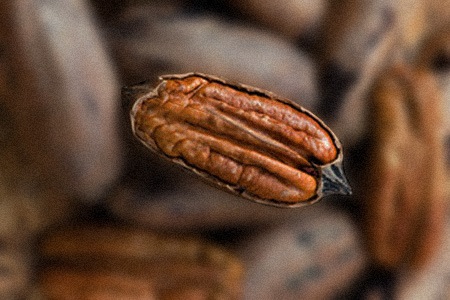
Mahan varieties of pecans are very enjoyable for several reasons. Obviously the most important is their rich taste, which they do have. You can enjoy that flavor in abundance due to how large the nuts are.
But what also enhances their popularity is that the shells are softer so it's much less of a chore to crack them and extract the nut. These pecans grow in dry climates and tend to be ready to harvest in the last three weeks of November.
Desirable Pecans
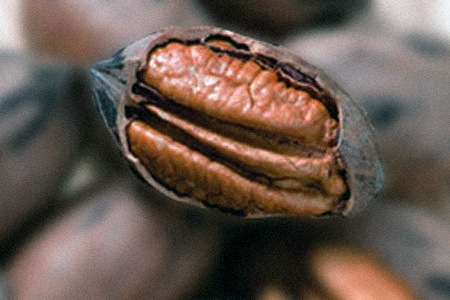
Desirable pecans are considered to be some of the most premium variations of this nut currently available on the globe. The main reason behind it is its structure and density.
Its exterior shell is smooth and massive, while the kernel inside is thick and filling. Biting into one of these types of pecans feels extremely satisfying and fulfilling due to this feature.
A huge reason behind a lot of people liking the Desirable pecan is its ease of consumption.
In most cases, many people struggle with breaking apart this nut as most variations have extremely hard shells.
However, this type has a relatively softer exterior, making it easier to open and consume. Therefore, it’s a much more hassle-free option.
Another great quality of the Desirable pecan is its reliability and dependability when it comes to cultivation. In the case of most pecans, it's very difficult to zone in on a specific time in which you can expect them to mature and be ready for plucking.
However, this variation is ready for extraction within late October and early November, making it easier to estimate when to pluck them.
Although the Desirable pecans are delectable, there are a couple of issues you might face when buying them due to the lack of availability. It's difficult to find them because it's usually grown in comparatively lesser quantities.
Furthermore, it is relatively more expensive due to its high-quality status, making it hard for most people to afford it on a daily basis.
Stuart Pecans
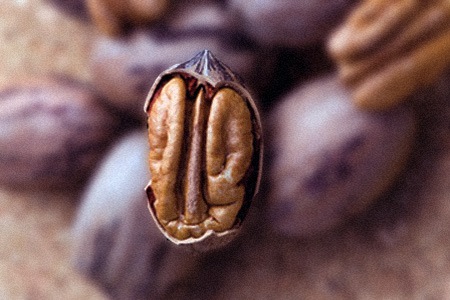
Among the largest kinds of pecans (but not quite as big as Desirable pecans), these are very common due to their ease of growing in a range of USDA Hardiness Zones (six to nine). The trees are sturdy and without much inclement weather in the south, they're dependable.
They're also low maintenance with a large harvest volume. It's said you can expect to gather 52 nuts per pound that you collect. The only problem is if you plant a Stuart pecan tree today, you can expect to wait nearly a decade before it starts to bear its nuts.
Osage Pecans
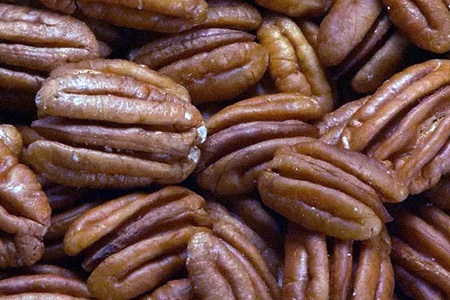
These pecan trees were developed to thrive in the northern regions of the USA. They're cold tolerant, resistant to pests and diseases, and become ripe in the first two weeks of September before it gets too cold to be out harvesting them.
The nuts of these types of pecans range between small and medium. They have an elliptical shape and plenty of oils that helps them split in halves easily. You'll find them to be familiar if you're experienced with Elliot pecans.
Curtis Pecans
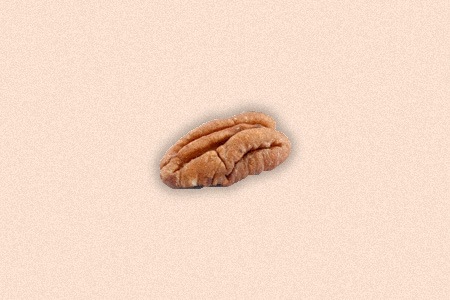
If you’re looking to buy pecans in great amounts for everyday consumption, then the Curtis pecan is perhaps the best choice for you.
This late-season pollinizer usually grows in large quantities and is relatively small in size, causing it to be normally sold in big portions. You will find it easily available in most super shops due to its large availability.
A significant feature of the Curtis pecan is its aesthetics and its distinguishable body. It grows in batches of three and has two layers of shell, with the first layer popping out in the design of a flower.
The second layer of the shell has an oval shape with dark speckles scattered throughout it. Its kernel is relatively smaller in comparison to the shell.
Farmers in particular love growing the Curtis pecan because of how strong the plant is and its durability. It has a robust body and stands completely upright, requiring no extra support when growing.
Furthermore, it has a good amount of resistance to scabs and leaf diseases, making it relatively easier to grow and nurture them.
Even though there are lots of benefits to growing and eating Curtis pecans, there is a major issue with cultivating them. This variation only grows in certain situations, stripping it off its universality. Unless you’re living in a warm or humid climate, making it a high-maintenance pecan.
Creek Pecans
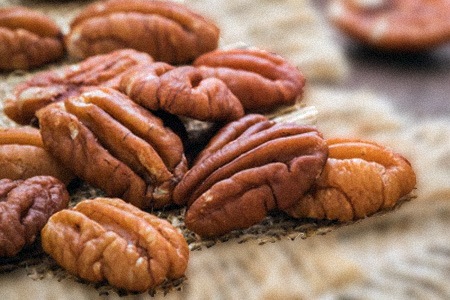
If you're patient but not-too-patient, the Creek pecan tree can start producing nuts within five years, and when it does the yields are fantastic. You'll be baking pecan pies, making butter pecan types of donuts, and eating nuts until you can't stand it.
You can expect 54 nuts per pound in general and will find cracking and peeling them to be a relatively easy task thanks to their thinner shells. Just know that the tree can reach 100 feet in height with branches spanning 50 feet in diameter.
Paper-Shell Pecans
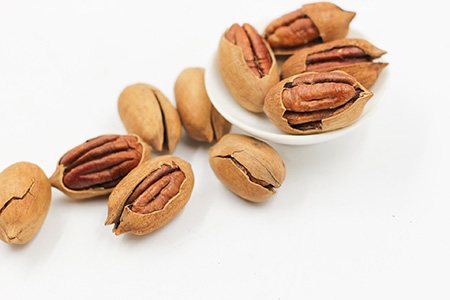
Among all the varieties of pecans, none have risen in popularity as fast as paper-shell pecans. This is because these different types of pecans have shells that are very thin, thin enough that some people will crack them without the help of a nutcracker.
They have a sweet taste to them, making these pecan types a frequent choice for using in pecan pies and even pecan types of bagels. Even if you aren't baking a pie, they're perfect snacks for anyone. You can think of cracking them to being similar and even easier than pistachios.
Moreland Pecans
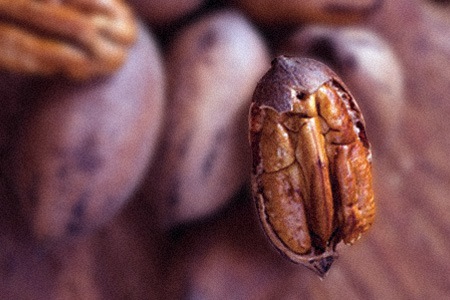
Perhaps the most perfect candidate for growing pecans in a commercial manner, the Moreland pecan is more reliable and dependent than on all other variations.
It's got the highest level of disease resistance and is also dependable for producing high amounts regularly. Therefore, it is a popular choice among farmers worldwide.
A significant quality of the Moreland pecans is their sheer size. It's one of the largest variations of this nut, and each of them is extremely thick.
The kernel's shape resembles that of a loaf and only 55 of these are enough to make 1 pound. Therefore, if you're trying out a recipe where crushed or ground pecans are necessary, you can go for this one.
Another great thing about growing Moreland pecans is their strength and durability. The trees are extremely strong and dense; therefore, they can withstand storms and eliminate the possibility of getting swept by rain or damaged by a storm.
It requires very little maintenance and care to grow properly and provide a good amount of nuts. One unique feature of the Moreland pecan is its ability to create hybrid versions of the nut.
Unlike most plants of this variety, this one is compatible with cross-pollination. You can pollinate it with the Desirable pecan tree and create a different type of nut, which has the perfect level of thickness and is especially delectable.
Pawnee Pecans
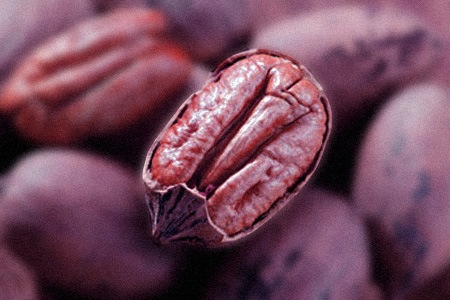
People prefer to grow pawnee pecan trees because of their smallness relative to other types of pecan trees. They tend to reach around 30 feet in height and will spread in breadth about 30 feet as well. They give off and receive pollen very easily.
If you live in the southern latitudes of the United States this is a great choice for you. They produce "paper-thin" shells to a degree, are much bigger than actual paper-thin pecans, and are just as sweet.
Other Types of Pecans
As we mentioned, there's over 500 types of pecans and pecan trees out there. Listing them all would be absurd, but here's what I'd consider "tier 2" pecans if you want to explore further:
- Mandan Pecans
- Kiowa Pecans
- Cheyenne Pecans
- Forkert Pecans
- Oconee Pecans
- Kanza Pecans
- Western Schley Pecans
- Elliot Pecans
- Zinner Pecans
The list of different types of pecans literally goes on and on. But not all varieties of pecans have the right flavors and tastes for enjoying as a food item. Unless you just like them for other reasons, all you're doing is creating a mess to clean up in the yard by growing some of the other varieties of pecans!
Types of Pecans for the Right Dishes
A lot of people tend to use the wrong pecan varieties when trying to make a dish or trying to grow it for commercial purposes. However, now that you have gone through our article, you won’t be making this mistake.
We are confident that you will be easily able to determine which sort of pecan is better for which thing and choose wisely.
Let it be baking pies or having your own personal garden of fruit and nuts, you will always be able to choose the right types of pecans now. Choosing the perfect pecan will never seem confusing ever again.



